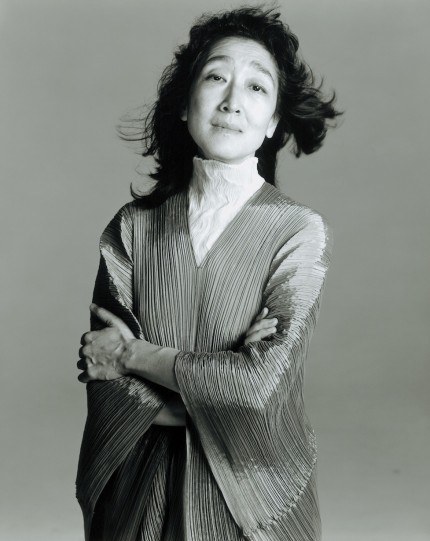With insight and sensitivity, Uchida scales the challenge of Schubert’s late sonatas

Mitsuko Uchida performed Schubert's three final sonatas in Chicago Sunday afternoon at Symphony Center. Photo: Richard Avedon
If Shostakovich’s string quartets contain his most personal music, for Schubert, the composer’s deepest, most interior thoughts are found in his last piano sonatas. In these three expansive works—competed in a feverish rush just two months before his death—one finds the gravely ill Schubert adhering outwardly to the parameters of the genre while exploding its formal dimensions and expressive boundaries. The composer’s characteristic lyricism and craft are there but this final musical testament also presents intermittent glimpses of a bleak, godless landscape with a degree of psychic dislocation and existential terror that can be jarring even to jaded 21st-century ears.
One of these intensely demanding works would be sufficient for any single recital, yet Mitsuko Uchida elected to perform all three late Schubert sonatas in an ambitious program Sunday afternoon at Symphony Center in Chicago. She will repeat the program next month at Carnegie Hall and in London.
Uchida, who also can be heard in her annual Mozart program with the Chicago Symphony Orchestra this week, has long been an advocate of Schubert, with the Viennese composer figuring nearly as much as Mozart in Uchida’s repertoire and recordings.
Her performances Sunday showed this long experience, with polished, nearly faultless playing technically and thoughtful, dramatic interpretations that have clearly deepened and grown even more probing over time.
In the opening Sonata in C minor, D.958, Uchida’s diamond-bright articulation and tonal sensitivity conveyed the forthright Beethoven influences, reflected in the sharp dynamic contrasts and the frenetic nerve-wracked finale.
The pianist’s poised expression and rarefied dynamic detailing were at their finest in the sonatas’ slow movements, which were unfailingly elegant and nuanced. And yet at times, one wanted more sonorous power and dramatic force in those sudden lightning-like disruptions. In the C-minor Sonata, Uchida’s account of the Adagio seemed fractionally over-refined, the chromatic explosions missing some of their eruptive impact.
So too in the Andantino of the Sonata in A major, D.959, the sense of the center not holding and the wild oscillations spinning out of control was only partly realized with the violent upheavals lacking an essential brutality. Still there was much first-class playing elsewhere in the A major, with Uchida’s fluent handling of the epic opening movement, her vital fingerwork in the fleet, Chopinesque Scherzo, and her supple articulation of the songful closing Rondo, with some dazzling bravura in the florid coda.
Uchida rose magnificently to the challenge of the Sonata in B flat, Schubert’s final essay in the form. The vast span of the opening Molto moderato was charted with a firm architectural grasp and a keen sense of the work’s unfolding drama. The pensive main theme with its progress repeatedly undermined by malign bass tremolos and stormy outbursts was rendered with the greatest artistry. In the Andante, Uchida’s spacious, introspective playing was beautifully done, with a finely detailed palette of subtle hues and dynamics.
The gamboling finale can seem rather lightweight after the profound expression of the preceding movements but here Uchida invested the darker reprised material with sufficient weight and gravitas to make the B-flat sonata seem more of a fully integrated work than is often the case. Even with quibbles, this was supremely first-class Schubert playing from one of the premier keyboard artists of our time.